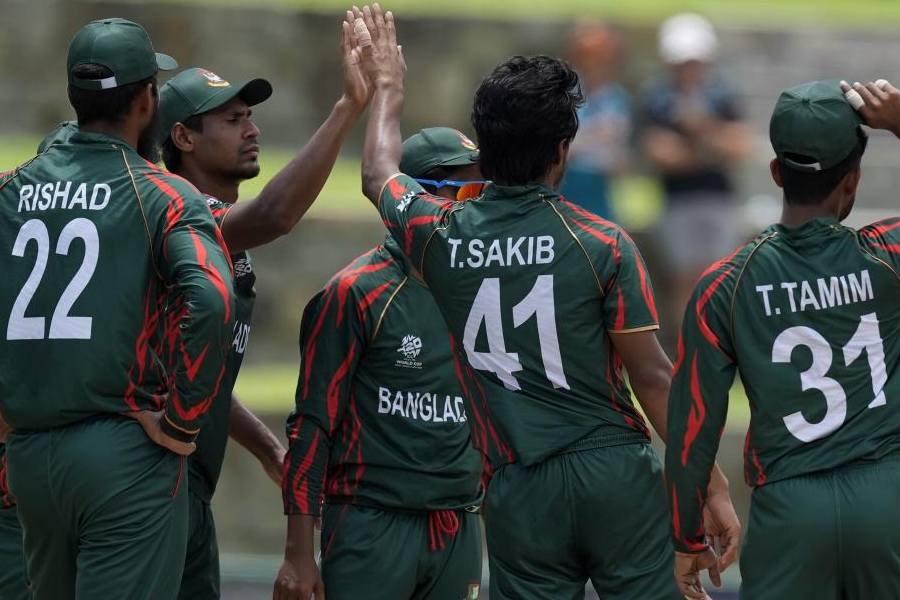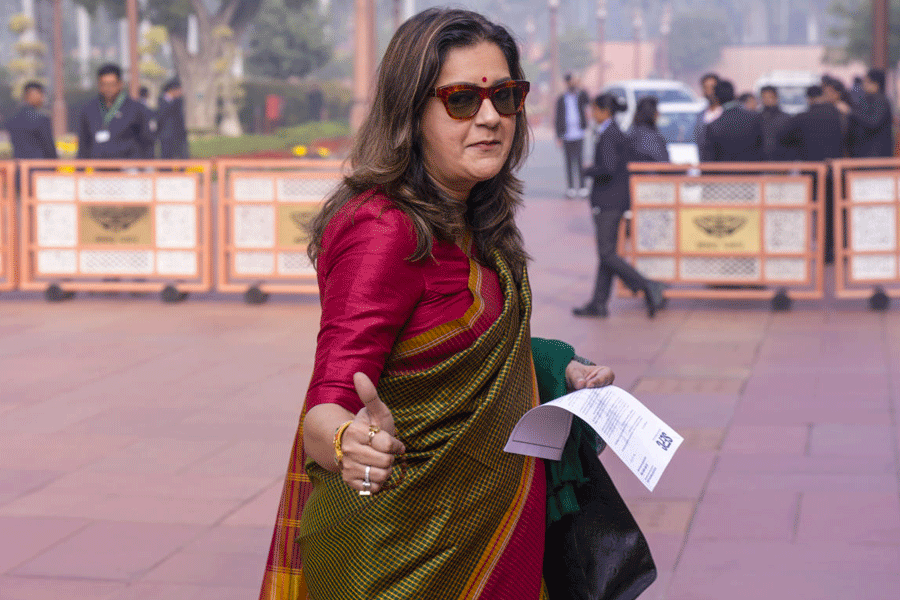 |
 |
 |
| Alladiya Khan with his sons, Manji and Bhurji (top); Kesarbai Kerkar (middle) and Dhondutai Kulkarni (bottom) |
The Music Room By Namita Devidayal,
Random House India, Rs 395
In 1977, the year she passed away, Kesarbai Kerkar’s unforgettable rendition of raga Bhairavi, “Jaat kahan ho”, literally reached the celestial heights. This happened not because of her divine vocal talent (Tagore had conferred on her the title, “Surashri”, after an earth-shattering performance in Calcutta), and turned out to be a different kind of apotheosis. In fact, it was the Voyager spacecraft that carried her recorded voice to outer space, along with a selection of several other immortal melodies.
Many years later, Namita Devidayal learnt about this fascinating journey from a mischievously cryptic remark made by her guru, Dhondutai Kulkarni: “Did you know that Kesarbai’s music is circulating through the solar system?” “I gave my teacher a bemused look,” Devidayal confesses, “but suspended disbelief for the story that would follow, for I knew it would be charming, even if apocryphal”.
It is this endless curiosity for stories — about life’s little ironies, great tragedies or strange comedies, and not all of them related to music — that has kept Devidayal close to her music teacher for almost three decades. In her excellent first book, The Music Room, she weaves these tales together with the sophisticated whim of a khayal-singer. And just like an accomplished classical artist, Devidayal manages to give her narrative an overarching structural unity. The odds and ends of many kinds of life-writing — autobiography, biography, reminiscences, and table-talk — come together in this structure.
This complex nexus of many lives and histories is as intricate as a formidable Jaipur-style taan. Devidayal leads the readers on to the lives of several great musicians — focusing mainly on Dhondutai, but also moving on to Dhondutai’s guru, Kesarbai, and Khansahib Alladiya Khan, the founder of the Jaipur gharana. Yet, behind all these illustrious lives, we also follow — with curiosity, empathy and concern — the growth of another musical sensibility, that of Devidayal herself.
The story begins with Devidayal visiting her teacher for the first time as an impetuous teenager, uninterested in music and blissfully ignorant of the possibilities of her sonorous bass voice. Before long, more than the real music itself, she is captivated by the music room, with its shrine to miniature gods and goddesses, and by the people who live there — Dhondutai and her ancient mother, Ayi. Further, the journey to Kennedy Bridge from the protected, upper-middle class life of her family brings her close to a host of strange characters — pimps, women of ill-repute, beggars. They were people from another world altogether.
The Music Room depicts these different social spheres, each of them informed by its intense emotional history, as something immeasurably rich and alive. In the dingy little Kennedy Bridge apartment, young Devidayal is exposed to values and beliefs, which, with her privilege and liberal upbringing, she finds difficult to accept. She is fascinated by her teacher’s selfless devotion to art even in the face of poverty and social disapproval, although she can never aspire to this kind of artistic self-forgetfulness herself. The music room thus becomes a self-distancing as well as self-revealing space.
Increasingly, as with most musicians who decide not to make a living out of music, Devidayal started living music in other, intangible ways. Growing up through the years with weekly music lessons — sometimes even being forced to attend classes by her mother — she felt the ragas growing into her soul until there naturally came a time when she could never outgrow that music. Despite her promising voice — she is lovingly called “little Kesarbai” by connoisseurs — she chose to go up to Princeton and, later on, to become a journalist. Yet, coming back to the “timeless” music room, after spending two years in the US, left her feeling utterly reassured, “like going back to your childhood room many years later, and finding your teddy bear perched exactly where you left it, with its left eye still hanging loose”. As she grew older, this same room afforded her some time out from daily life, a respite from being a wife, a mother or a reporter.
Despite her intensely personalized relationship with music, Devidayal writes on music theory with scholarly acuteness, combining critical awareness of the grammar with a sophisticated taste. Alongside anecdotes, she quietly includes sections on the history of Indian classical music, and its sociological evolution. A theoretical discussion of the religious origins of Hindustani music, for instance, is sharpened by the sudden diversion into the Dagar brothers’ soulful performance at a concert organized in Shivaji Park after the Babri Masjid riots.
In Devidayal’s book, one finds the long-awaited account of listening, learning and growing up with classical music in the Seventies. If veterans like Kumar Prasad Mukherji and Sheila Dhar have given us glimpses of “the lost world” of Hindustani music, Devidayal looks at the residue of that vanished time. She examines the ruins of the Great Tradition unsparingly, often questioning its eccentric ethos. Dhondutai’s fierce celibacy versus her guru Kesarbai’s flamboyant lifestyle is one such oddity.
Tradition and adventure are both contained within the ethical universe of this music even in the 21st century. Some of these traditions are still guarded by artists of the Old World and revived by their more oddly imaginative pupils. Dhondutai and Namita become such a guru-shishya pair, when, in the most sublime moment of the book, they sing raga Sukhiya Bilawal before the goddess at the Mahalaxmi Temple in Kolhapur, on an ordinary morning, just as Alladiya Khan and his sons, Bhurji and Manji, used to in some long-forgotten past.











